As we delve into the ever-evolving world of kitchen appliances, one innovation that has gained significant traction is the use of non-stick coatings. These coatings have transformed the way we cook, offering convenience, ease, and health benefits. In this exploration, we’ll uncover the rise of non-stick coatings, the stringent standards of LFGB compliance, their numerous benefits, current market trends in Europe and the United States, consumer preferences and demographics, the latest technological advancements, the regulatory landscape and challenges, and finally, glimpse into the future of this dynamic market.
Introduction to European and American Kitchen Appliance Markets
The European and American kitchen appliance markets are two of the most sophisticated and diverse sectors within the global home goods industry. Europe, with its rich culinary heritage and emphasis on quality, offers a landscape where innovation meets tradition. The United States, on the other hand, is characterized by its dynamic consumer culture, which often leads the way in adopting new technologies and design trends.
In Europe, countries like Germany, Italy, and France are known for their high-quality appliances that cater to both professional chefs and home cooks. German kitchen appliances, in particular, are renowned for their durability and precision, with brands like Miele and Siemens leading the pack. Italian appliances, often seen as the epitome of design and craftsmanship, are also highly sought after for their aesthetics and performance.
The American market, while similar in its appreciation for quality, tends to be more eclectic. It’s a melting pot of styles and technologies, with a wide range of brands targeting different demographics. From high-end brands like Viking and Wolf offering commercial-grade appliances for the home, to more budget-friendly options from companies like GE and Whirlpool, the U.S. market has something for everyone.
In both regions, kitchen appliances have evolved beyond mere functionality to become a statement of personal style and lifestyle. Smart appliances, for instance, have gained traction as consumers look for ways to integrate technology into their daily routines. These smart kitchen gadgets can range from refrigerators that can order groceries to dishwashers that can be controlled via a smartphone app.
One significant trend in both the European and American markets is the demand for eco-friendly and energy-efficient appliances. Consumers are increasingly conscious of their environmental footprint and are willing to invest in products that help reduce energy consumption and waste.
The European Union has stringent regulations, including the LFGB (Liegenschaftsfrei von Giften befreit), which ensures that kitchen appliances are safe for use and comply with high health and safety standards. This certification is a testament to the European commitment to quality and consumer protection. In the U.S., while there isn’t an exact equivalent to LFGB, there are similar regulations under the Consumer Product Safety Improvement Act (CPSIA) and the Energy Policy and Conservation Act (EPCA) that govern the safety and efficiency of appliances.
In Europe, the kitchen appliance market is also influenced by cultural differences. For example, in Germany, there’s a strong preference for built-in appliances that seamlessly integrate into kitchen cabinets, while in Italy, standalone appliances are more common. In the U.S., the market is driven by consumer trends, with a mix of both integrated and standalone appliances available.
When it comes to non-stick coatings, these two markets have distinct preferences. In Europe, there’s a growing trend towards healthier cooking methods, which has led to a preference for non-stick coatings that are free from harmful chemicals like perfluorooctanoic acid (PFOA) and polytetrafluoroethylene (PTFE). Brands that offer LFGB compliant non-stick coatings are finding a niche market among health-conscious consumers.
In the U.S., non-stick coatings have been a staple for decades, and while there’s a similar shift towards healthier options, the market is more accepting of a broader range of coatings. American consumers are more likely to consider the longevity and ease of maintenance of non-stick coatings, in addition to their health benefits.
Overall, the European and American kitchen appliance markets offer a fascinating study in consumer behavior and market dynamics. With a focus on innovation, sustainability, and health, both regions are shaping the future of kitchen appliance technology. As consumers continue to seek out products that align with their values and lifestyles, the landscape of kitchen appliances will undoubtedly evolve, bringing with it new challenges and opportunities for manufacturers.
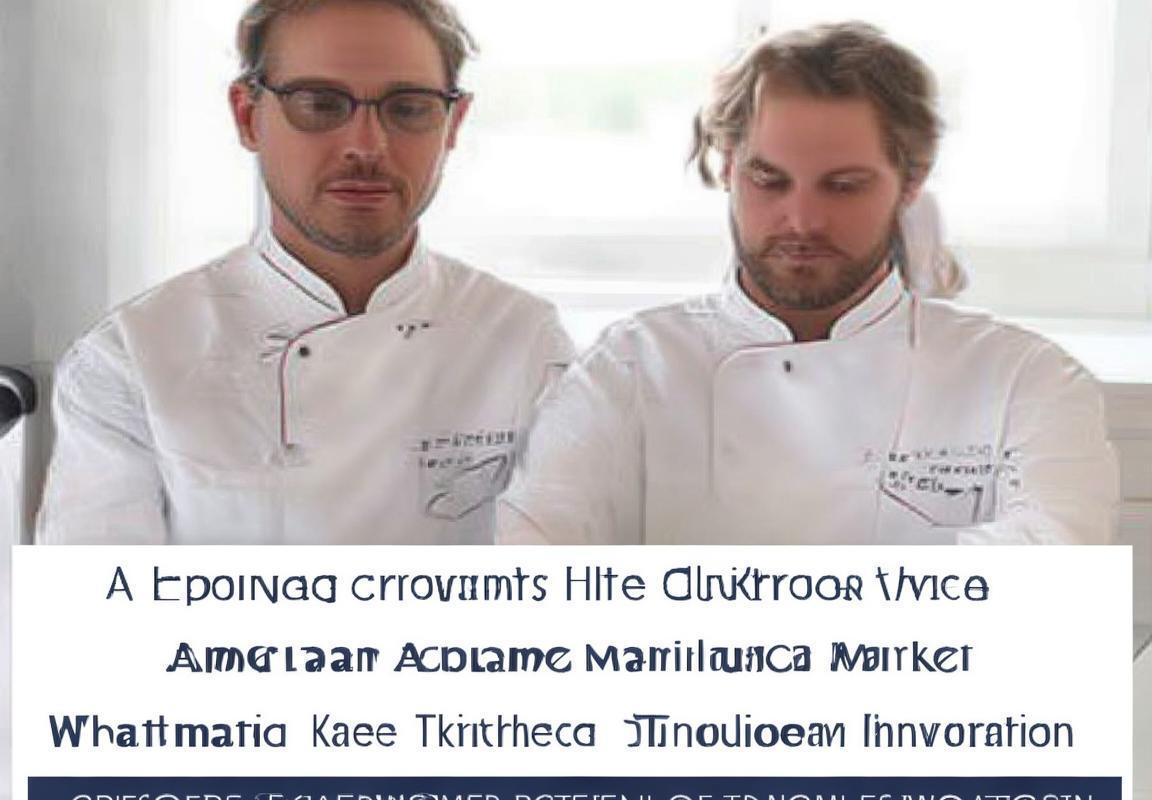
The Rise of Non-Stick Coatings in Kitchen Appliances
The non-stick coating industry has seen a remarkable surge in the kitchen appliance sector, transforming the way we cook and clean. Once a niche product, these coatings have now become a staple in European and American homes. Here’s a closer look at how this revolution has unfolded.
Cookware has long been a battleground for convenience and performance. Traditional cookware, while durable, often required excessive oil to prevent food from sticking, leading to a greasy mess and a lot of cleanup. The introduction of non-stick coatings revolutionized the cooking experience by offering a low-friction surface that allowed for healthier, oil-free cooking.
As the demand for healthier lifestyles grew, so did the popularity of non-stick coatings. They promised a healthier alternative, reducing the need for added fats and calories in meals. The ease of cleaning also became a significant selling point, as busy consumers sought to minimize their post-cooking chores.
Manufacturers quickly seized the opportunity, developing various non-stick coatings for different types of cookware. Teflon, a brand synonymous with non-stick technology, was at the forefront of this innovation. However, as consumer awareness of environmental and health concerns increased, so did the search for safer alternatives.
Enter the era of environmentally friendly and health-conscious non-stick coatings. These new coatings were designed to be durable, easy to clean, and free from harmful chemicals like PFOA and PTFE, which were previously associated with older non-stick formulations. Companies like GreenPan and All-Clad have gained traction by offering eco-friendly non-stick options that appeal to the environmentally conscious consumer.
The market for non-stick coatings has expanded beyond cookware into other kitchen appliances. Skillets, baking pans, grills, and even electric skillets have all adopted these innovative coatings. The result is a kitchen where cooking becomes a more pleasant and efficient experience.
In the European market, non-stick coatings have found a particularly receptive audience. European consumers are known for their preference for high-quality, durable goods, and non-stick coatings fit this bill. The European Union’s strict regulations on chemical usage have also contributed to the rise of safer non-stick coatings, ensuring that consumers receive products that meet stringent safety standards.
Similarly, in the United States, the non-stick coating market has grown significantly. American consumers, who often seek out products that offer convenience and performance, have embraced non-stick coatings wholeheartedly. The North American market has seen a surge in the sale of non-stick cookware, with many households now owning at least one piece with a non-stick surface.
The rise of non-stick coatings has not been without its challenges. Consumer skepticism regarding the long-term health and environmental impact of certain coatings has prompted continuous innovation and reformulation. As a result, the industry has had to adapt to changing consumer demands, focusing on developing safer, more sustainable alternatives.
The future of non-stick coatings looks promising, with ongoing research into new materials and technologies. Nanotechnology, for instance, is being explored as a way to enhance the durability and longevity of non-stick coatings while maintaining their eco-friendliness. Additionally, the integration of non-stick coatings into other kitchen appliances, such as bakeware and grilling surfaces, is expected to further expand the market.
Overall, the non-stick coating industry has come a long way since its inception. It has evolved from a simple convenience to a symbol of health, sustainability, and innovation in the kitchen appliance sector. As consumers continue to seek out products that align with their values and lifestyle, the non-stick coating market is poised to grow even more, bringing with it a host of new and exciting possibilities for the future.
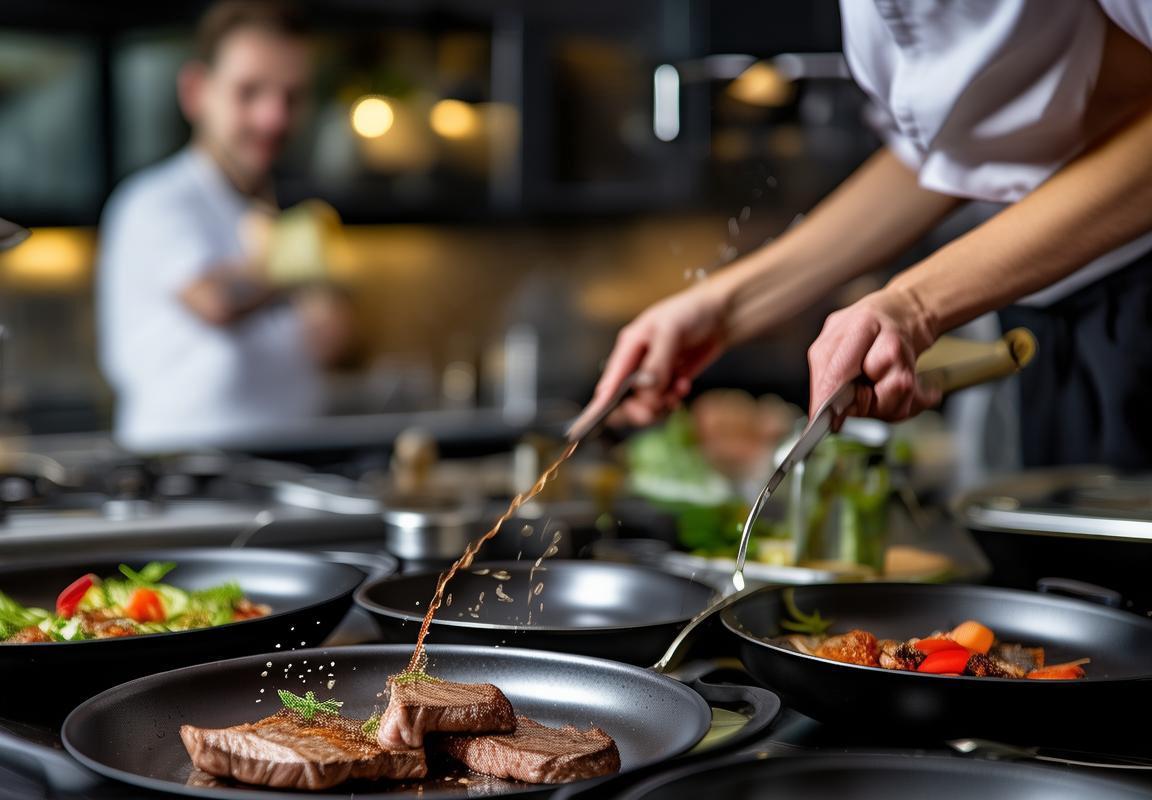
Understanding LFGB Compliance: A Key Benchmark
In today’s kitchen appliance market, one term that stands out as a crucial benchmark is “LFGB compliant non-stick coating.” The LFGB, or Lebensmittel- und Bedarfsgegenstände-Gesetz, is a stringent German standard that has become a global gold standard for the safety of kitchenware. This section delves into what LFGB compliance means and why it’s so significant in the non-stick coating industry.
The LFGB is part of the German Product Safety Act and was established in 2002 as a replacement for the previous regulations. It is recognized as one of the most rigorous food contact material regulations in the world. The standard covers a broad range of products, from kitchenware to toys, and it ensures that these products are safe for human use.
One of the key aspects of the LFGB is its focus on the materials used in kitchen appliances. Non-stick coatings, in particular, are a subject of close scrutiny. These coatings are designed to make cooking easier by reducing the need for oil and allowing food to release from the surface without sticking. However, they can also contain potentially harmful chemicals if not properly regulated.
The “LFGB compliant non-stick coating” refers to a coating that has been tested and proven to meet the strict criteria set forth by the German regulations. This includes strict limits on the levels of lead, cadmium, and other heavy metals, as well as other harmful substances that could leach into food.
Understanding the specifics of LFGB compliance requires looking at several key areas:
-
Material Testing: The coating must be tested to ensure it does not contain harmful substances above the permitted levels. This testing is comprehensive, covering the entire lifecycle of the product, from manufacturing to eventual disposal.
-
Migration Limits: The LFGB specifies maximum levels of migration for certain substances from the coating into food. These limits are set to protect consumers from exposure to toxic substances even at low levels.
-
Safety Profiles: The standard defines safety profiles for various types of materials that come into contact with food. Non-stick coatings must fall within these profiles, ensuring they are suitable for use in kitchen appliances.
-
Certification: Products that meet LFGB standards must be certified. This certification process involves independent testing and assessment by approved bodies, providing consumers with a clear indication of the product’s safety.
The significance of LFGB compliance in the non-stick coating market cannot be overstated. It sets a high bar for manufacturers, who must invest in quality control and safety assurance to meet these standards. For consumers, LFGB compliance is a reassurance that the product they are purchasing has been thoroughly tested and deemed safe for use.
As the global kitchen appliance market continues to evolve, the demand for LFGB compliant non-stick coatings is on the rise. This is due in part to the increasing awareness of food safety issues among consumers. People are more likely to choose products that have been certified as safe, especially when it comes to items that come into direct contact with food.
Moreover, the LFGB is not just a German standard; it has become a de facto global benchmark. Many countries have adopted or modeled their own food contact material regulations after the LFGB. This means that even if a product is not sold in Germany, it may still need to meet LFGB standards to be considered safe and acceptable in other markets.
In the wake of high-profile recalls and health scares related to non-stick coatings, the importance of LFGB compliance has only grown. Manufacturers that prioritize this certification are not only protecting their customers but also building trust in their brand. Consumers, in turn, are more likely to choose their products over those that lack such certifications.
In summary, the LFGB compliant non-stick coating is a testament to the industry’s commitment to safety and quality. It’s a symbol that reassures customers of the product’s safety, and it’s a standard that manufacturers take seriously. As the kitchen appliance market continues to expand and innovate, the role of LFGB compliance in ensuring product safety will remain a cornerstone of the industry.
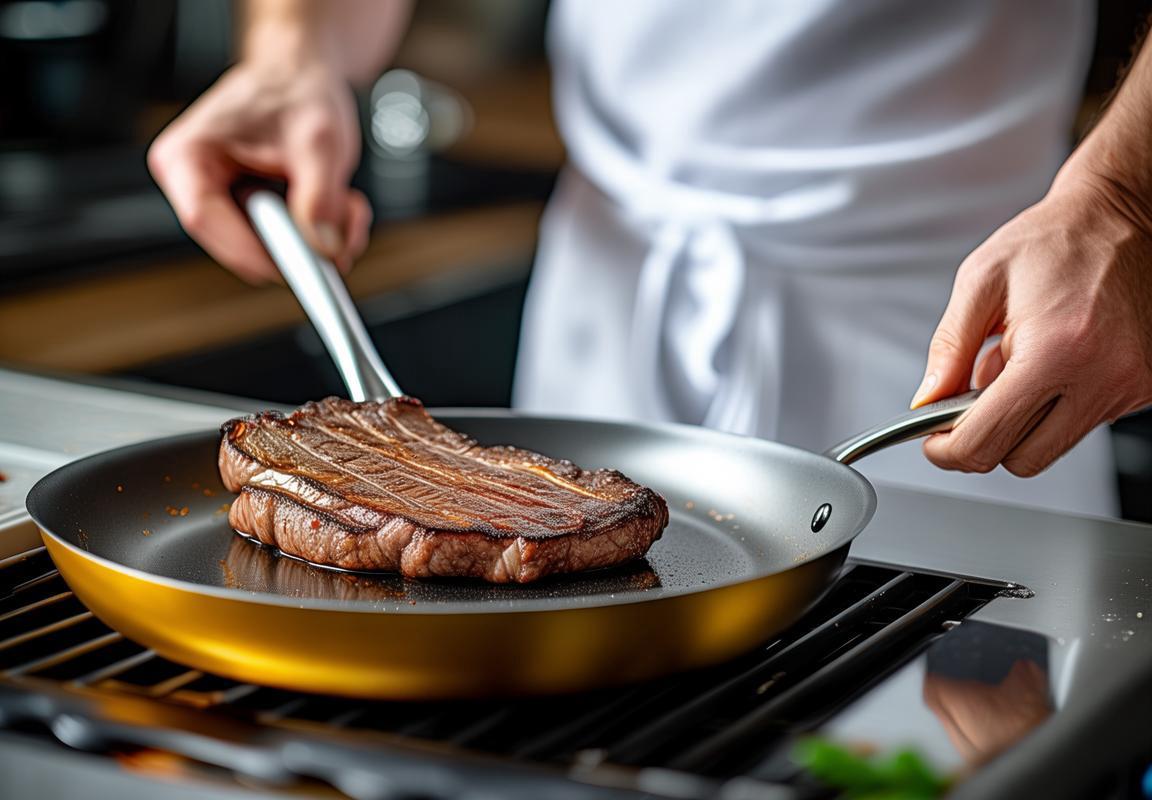
Benefits of LFGB Compliant Non-Stick Coatings
Non-stick coatings have become a staple in kitchen appliances, and their compliance with the LFGB (Law on the Control of Allergens in Food) standard is not just a regulatory requirement but a symbol of quality and safety. Here’s a closer look at the benefits these coatings offer:
-
Health and Safety: LFGB-compliant non-stick coatings are free from harmful substances like PFOA (perfluorooctanoic acid) and PTFE (polytetrafluoroethylene), which are known to be toxic when overheated. This means that the coating is safe for food contact, reducing the risk of contaminants leaching into the food and ensuring a healthier cooking environment.
-
Ease of Cooking: The primary advantage of non-stick coatings is their exceptional non-stick properties. They allow food to release from the surface effortlessly, which means less oil or butter is needed during cooking. This not only makes cleaning up easier but also helps in reducing the calorie intake, as there’s less fat in the dish.
-
Longevity and Durability: LFGB-compliant non-stick coatings are designed to withstand high temperatures without degrading or peeling off. This durability ensures that the appliance will last longer, providing years of reliable service. The resistance to scratches and abrasions also means that the coating can maintain its non-stick qualities over time.
-
Eco-Friendly: These coatings are more environmentally friendly compared to older non-stick technologies. They are easier to recycle and dispose of, and since they don’t require as much fat for cooking, they contribute to a lower carbon footprint. This is particularly important for those who are conscious about their environmental impact.
-
Improved Cooking Performance: The non-stick surface of LFGB-compliant coatings allows for a more even distribution of heat. This means that food cooks more evenly, reducing the risk of burning and improving the overall taste and texture of the dish. It’s especially beneficial for delicate foods like eggs, pancakes, and crepes.
-
Ease of Cleaning: Perhaps the most noticeable benefit of non-stick coatings is how easy they are to clean. Even stubborn food particles can be removed with just soap and water, without the need for harsh chemicals or abrasive cleaners. This not only saves time but also reduces the wear and tear on the appliance.
-
Versatility: LFGB-compliant non-stick coatings are not just for frying pans; they are used in a wide range of kitchen appliances, including baking sheets, grill pans, and even some pots and saucepans. This versatility makes them a popular choice among home cooks and professional chefs alike.
-
Food Tasting as Intended: Because the non-stick surface doesn’t absorb flavors or odors, the taste of the food is not altered. This means that you can enjoy the true flavors of your ingredients without any interference from the cooking surface.
-
Increased Cooking Speed: The non-stick nature of these coatings allows for faster cooking times, as less heat is needed to prevent food from sticking. This is especially useful for busy individuals who want to prepare meals quickly without compromising on quality.
-
Cost-Effectiveness: Over time, LFGB-compliant non-stick coatings can be cost-effective. Since they are durable and require less cleaning, they may not need to be replaced as frequently as other types of coatings, leading to long-term savings.
In conclusion, the benefits of LFGB-compliant non-stick coatings are multifaceted, offering peace of mind, convenience, and quality in the kitchen. From health and safety to ease of use and environmental considerations, these coatings are a testament to the advancements in kitchen appliance technology.
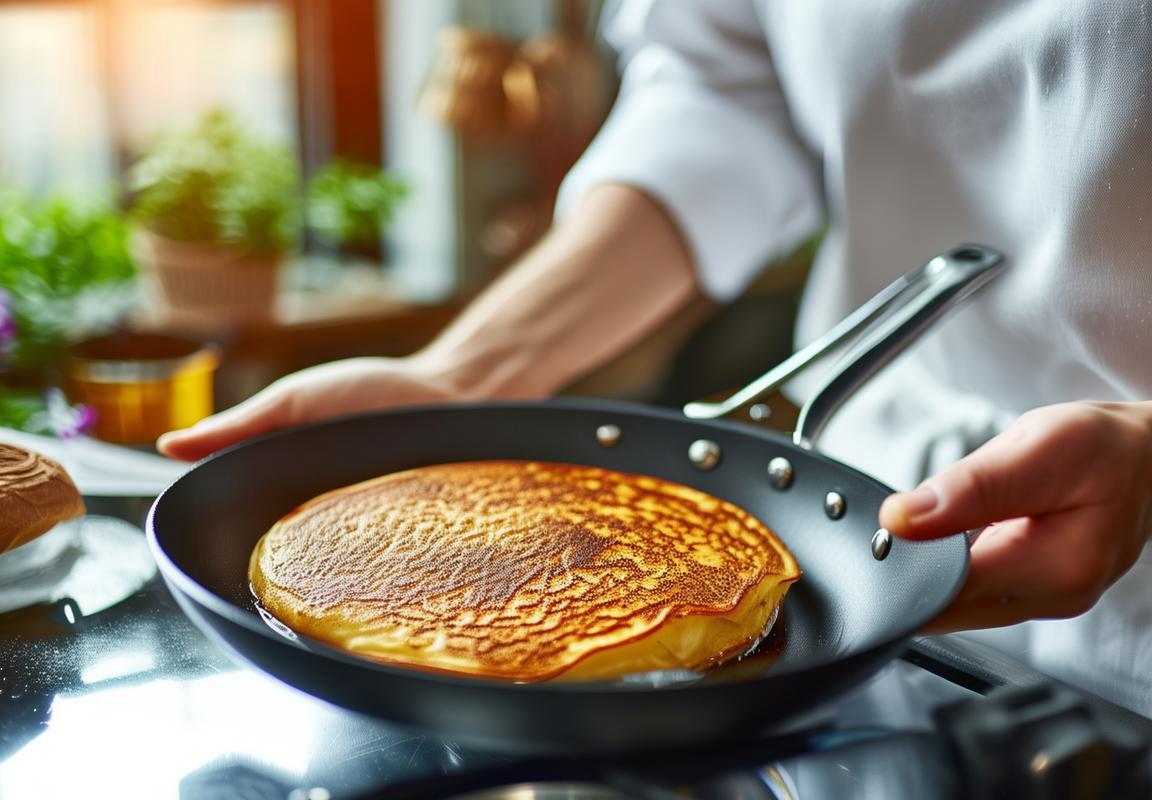
Market Trends in Europe and the United States
The European kitchen appliance market has seen a significant shift towards eco-friendly and health-conscious products. As consumers become more aware of the environmental impact of their purchases, the demand for appliances with non-stick coatings that are free from harmful chemicals has surged. This shift is not just driven by consumer preference but also by stringent regulatory standards such as the LFGB.
In the United States, the market for kitchen appliances has been traditionally dominated by large corporations, but there’s been a noticeable rise in the number of smaller, niche players focusing on sustainable and high-quality products. Non-stick coatings that meet LFGB standards have gained popularity, especially in the premium segment, where customers are willing to pay a premium for healthier and more durable appliances.
Smart technology integration is another trend that’s reshaping both European and American markets. Smart ovens, refrigerators, and cooktops are becoming increasingly common, offering users convenience and efficiency. These appliances often come with non-stick coatings that ensure easy cleaning and long-lasting performance.
In Europe, the market is segmented into various countries, each with its unique preferences and regulations. Germany, for instance, is known for its high-quality standards and is a significant market for LFGB-compliant non-stick coatings. The UK, France, and Italy also contribute significantly to the European market, with a growing preference for appliances that are both functional and safe.
In the U.S., the market is broader, with a diverse range of consumers. The East Coast tends to favor appliances that are sleek and modern, while the West Coast has a strong inclination towards eco-friendly and sustainable options. The rise of online marketplaces has also influenced trends, with more consumers seeking out appliances that are easy to order and ship directly to their homes.
Health and wellness are at the forefront of consumer concerns, and this is reflected in the kitchen appliance market. Non-stick coatings that are LFGB compliant are not only free from PFOA and PTFE, which are known carcinogens, but also from other harmful substances. This has led to a surge in demand for cookware, baking dishes, and other kitchenware that can be used without the risk of chemical leaching into food.
The U.S. market, in particular, has seen a rise in the use of ceramic and silicone non-stick coatings, which are not only healthier but also more durable than traditional PTFE coatings. These materials are also more environmentally friendly, as they are less likely to degrade over time and release harmful substances into the environment.
Innovation in non-stick coating technology is also a key trend. Manufacturers are constantly seeking new ways to improve the performance of their products while ensuring they meet LFGB standards. This includes developing coatings that are more resistant to wear and tear, have better release properties, and are easier to clean.
Another trend is the customization of kitchen appliances. Consumers are looking for products that not only meet their functional needs but also reflect their personal style. Non-stick coatings that come in various colors and finishes are becoming more popular, allowing consumers to choose appliances that complement their kitchen decor.
The global kitchen appliance market is also being influenced by the rise of e-commerce. Online sales platforms are making it easier for consumers to find and purchase LFGB-compliant non-stick coated appliances from around the world. This has expanded the market reach for manufacturers and has also led to increased competition, driving innovation and quality improvements.
As the demand for non-stick coatings that meet LFGB standards continues to grow, both in Europe and the United States, it’s clear that the market trends are pointing towards a future where health, sustainability, and technological advancements will be the cornerstones of kitchen appliance innovation.
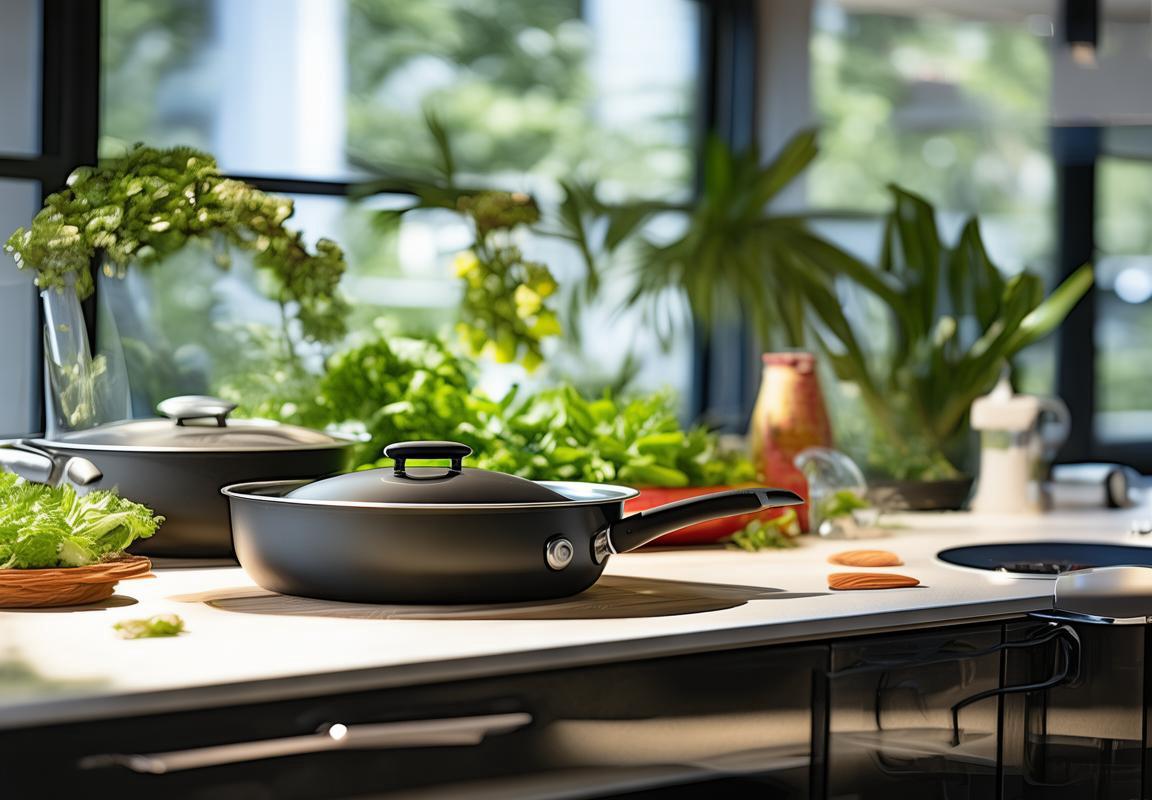
Consumer Preferences and Demographics
In the dynamic landscape of kitchen appliance markets, consumer preferences and demographics play a pivotal role in shaping trends and product development. These factors influence everything from design choices to technological advancements. Let’s delve into the nuanced world of consumer preferences and demographics in both Europe and the United States.
Cooking Styles and Preferences Vary WidelyCulinary habits in Europe and the U.S. differ significantly, reflecting a diverse array of cooking styles. In Europe, traditional cooking methods are still cherished, with many households preferring the taste and texture of food prepared over a stovetop or oven. This preference often translates to appliances that cater to these techniques, such as induction cooktops and multi-functional ovens. Conversely, in the U.S., the popularity of convenience cooking has led to a surge in demand for appliances like microwaves and single-serve coffee makers.
Health and Wellness Are at the ForefrontA growing trend across both regions is the emphasis on health and wellness. Consumers are increasingly seeking kitchen appliances that not only make life easier but also support a healthy lifestyle. This includes appliances with non-stick coatings that reduce the need for excessive oil, and those that offer programmable settings to monitor and control cooking temperatures. The popularity of slow cookers and air fryers in both Europe and the U.S. is a testament to this shift towards healthier cooking options.
Sustainability and Eco-Friendly ChoicesSustainability is another key driver of consumer preferences. There’s a noticeable shift towards appliances that are energy-efficient and made from sustainable materials. Consumers are not just looking for appliances that perform well; they also want to know that their purchase aligns with their values regarding the environment. This has led to a rise in demand for induction cooktops, which are more energy-efficient than traditional gas or electric burners, and appliances that have been certified as environmentally friendly.
Aesthetic Appeal and Smart FeaturesThe aesthetic appeal of kitchen appliances has never been more important. Consumers are looking for appliances that not only perform well but also complement their kitchen decor. Sleek designs, integrated control panels, and concealed handles are becoming more common as consumers prioritize appliances that blend seamlessly into their kitchen environment. Additionally, the integration of smart features, such as Wi-Fi connectivity and voice control, is becoming increasingly popular, as these features provide convenience and the ability to monitor and control appliances remotely.
Demographic Shifts Influencing Market TrendsDemographic changes are also shaping the kitchen appliance market. For instance, the aging population in Europe and the U.S. is driving demand for appliances with larger, easier-to-read displays and controls. Similarly, the rise of dual-income households has led to a need for appliances that can handle larger loads and are efficient in their energy consumption. On the other hand, the growing number of younger consumers, particularly those in urban areas, are driving the demand for compact, multipurpose appliances that cater to their fast-paced lifestyle.
Cultural Influences on Kitchen Appliance ChoicesCultural influences play a significant role in shaping consumer preferences. For example, the popularity of Mediterranean cuisine in Europe has led to an increased demand for appliances that can handle high-heat cooking techniques, such as pizza ovens and grills. In the U.S., the influence of international cuisine has led to a surge in interest in appliances that can mimic traditional cooking methods from around the world.
Branding and Trust Are CrucialLastly, the role of branding and trust cannot be overstated. Consumers are more likely to purchase appliances from brands they trust and that have a strong reputation for quality and safety. This is particularly important when it comes to non-stick coatings, as there has been a growing concern about the potential health risks associated with certain coatings. Brands that can demonstrate compliance with rigorous safety standards, such as the LFGB, are likely to gain a competitive edge.
In conclusion, consumer preferences and demographics are multifaceted and ever-evolving. They drive the demand for a wide range of kitchen appliances, each with its unique set of features and benefits. Understanding these factors is crucial for manufacturers and retailers looking to stay ahead in a market that is constantly being reshaped by the needs and tastes of consumers.
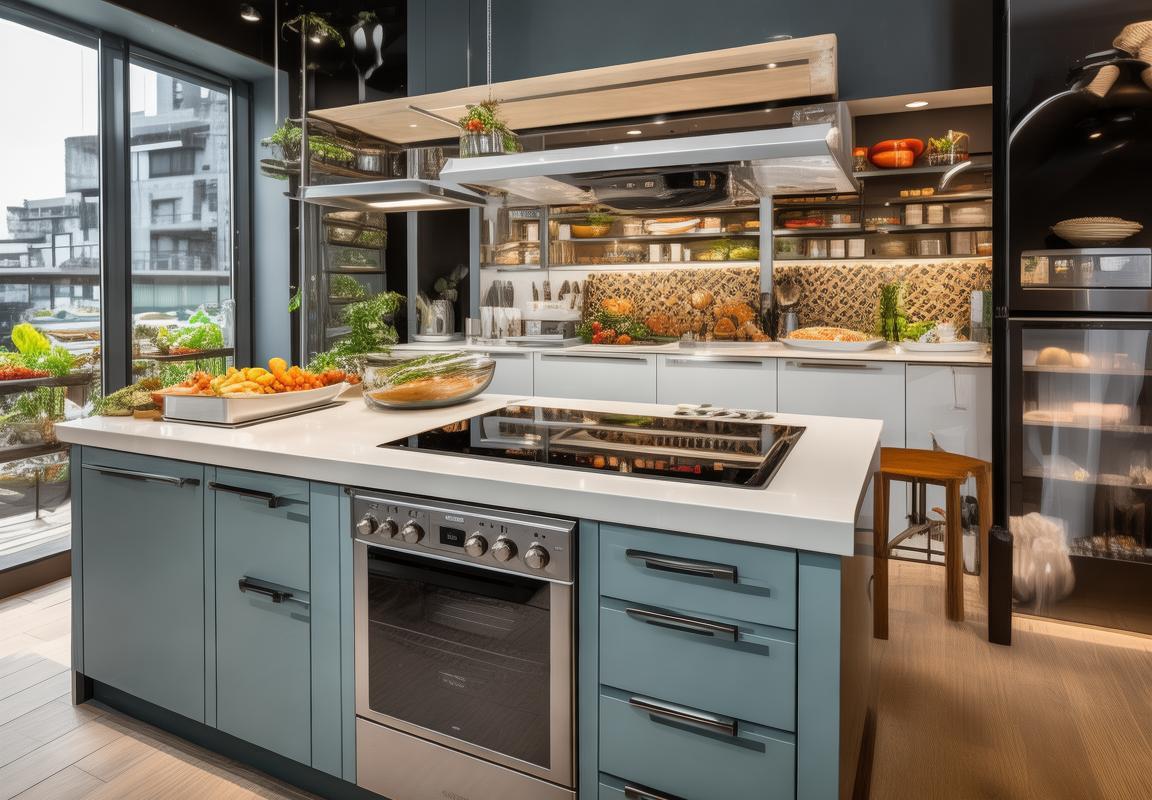
Innovation and Technological Advancements
The kitchen appliance industry has seen remarkable advancements in technology, leading to innovative products that enhance efficiency, convenience, and safety. These innovations are not just limited to the aesthetics but also to the functionality and performance of these devices. Here’s a closer look at some of the key technological advancements shaping the market:
-
Smart Connectivity and IntegrationModern kitchen appliances are increasingly becoming part of a larger smart home ecosystem. This integration allows users to control and monitor their appliances remotely through smartphones or voice assistants. Smart ovens, refrigerators, and dishwashers can now be connected to Wi-Fi or Bluetooth, enabling users to set timers, adjust settings, and even check the status of their appliances while away from home.
-
Energy EfficiencyEnergy-saving technology has become a cornerstone in the kitchen appliance industry. Appliances with high energy efficiency ratings are not only more environmentally friendly but also help consumers save on energy bills. Innovations like inverter technology in refrigerators and induction cooktops provide faster cooking times with reduced energy consumption.
-
Health and Safety FeaturesAs consumers become more health-conscious, kitchen appliances are incorporating features that promote healthier cooking and safer usage. For instance, air fryers and pressure cookers offer healthier alternatives to traditional frying and boiling, respectively, by reducing the amount of oil and cooking time. Additionally, safety features like child locks, automatic shut-offs, and anti-slip bases are becoming standard in many appliances.
-
Customization and PersonalizationToday’s kitchen appliances offer a level of customization that was once unimaginable. Smart refrigerators, for example, can be equipped with digital displays that show recipes, nutritional information, and even suggest meal plans based on the user’s dietary preferences. Induction cooktops allow for precise temperature control, making it easier for chefs and home cooks to achieve the perfect cooking results.
-
Smart Sensors and AIThe integration of sensors and artificial intelligence (AI) has opened up new possibilities in kitchen appliances. Sensors can detect food spoilage in refrigerators, monitor the cleanliness of dishwashers, or even adjust the cooking temperature of an oven based on the type of dish being prepared. AI algorithms can analyze usage patterns and suggest maintenance or upgrade options, providing a more proactive approach to appliance care.
-
Modular and Flexible DesignDesigners are focusing on creating kitchen appliances that are modular and flexible, allowing for easier upgrades and replacements. Modular appliances can be mixed and matched to suit different kitchen layouts and styles, while also offering the possibility to swap out components as technology evolves.
-
Eco-Friendly MaterialsThere’s a growing trend towards using eco-friendly materials in kitchen appliances. From recycled plastics to stainless steel, manufacturers are exploring sustainable options that reduce the environmental impact of their products. This includes the use of materials that are easier to recycle at the end of the appliance’s life.
-
Enhanced Cooking PerformanceInnovations in cooking technology continue to push the boundaries of what’s possible in the kitchen. From multi-functional ovens that can bake, roast, and grill to steam ovens that provide a healthier cooking option, these advancements are making it easier for consumers to prepare a wide variety of dishes with minimal effort.
-
User Experience and DesignThe user experience is now a central focus in kitchen appliance design. From intuitive interfaces to sleek, modern aesthetics, manufacturers are investing in user-friendly controls and designs that make appliances not just functional but also a pleasure to use. This includes touchscreens, voice control, and haptic feedback to improve the overall interaction with the appliance.
-
Integration with Smart Kitchen SystemsThe future of kitchen appliances lies in their ability to integrate with broader smart kitchen systems. This could include everything from automated meal prep to personalized dietary recommendations based on health data. As technology continues to evolve, the kitchen of the future will be a testament to the seamless blend of technology, convenience, and culinary innovation.
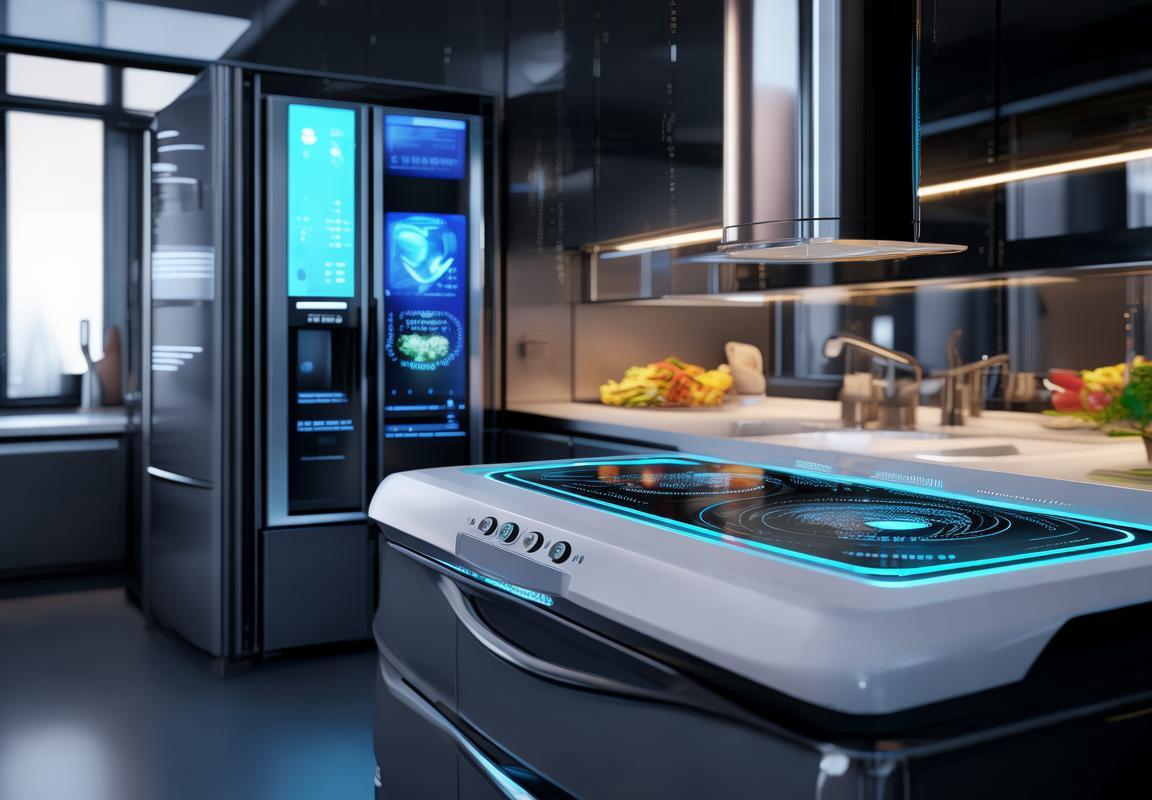
Regulatory Landscape and Challenges
The European Union’s stringent regulations, such as the LFGB (Law on the Safety of Consumer Goods), have set a high bar for product safety and quality in the kitchen appliance market. Compliance with these standards is not only a legal requirement but also a testament to a brand’s commitment to consumer well-being. In the United States, while regulations may not be as stringent as those in Europe, they are no less crucial for ensuring that kitchen appliances meet safety and health standards.
The regulatory landscape is shaped by a variety of factors, including material composition, manufacturing processes, and the intended use of the appliance. For instance, non-stick coatings must undergo rigorous testing to ensure they do not leach harmful substances into food. This includes evaluating the coating’s chemical composition and its ability to withstand high temperatures without breaking down or releasing toxic fumes.
Manufacturers face challenges in meeting these standards, especially when it comes to the development of new materials and technologies. The quest for safer, more durable non-stick coatings has led to a surge in research and development efforts. One of the main challenges is finding a balance between non-stick performance and environmental concerns. Traditional non-stick coatings often contain PFOA (perfluorooctanoic acid), a chemical linked to various health issues. The search for alternatives, such as PFOA-free coatings, has become a priority.
Regulatory compliance also involves ongoing monitoring and certification. In Europe, for example, manufacturers must adhere to the CE marking, which signifies that a product meets all the necessary health, safety, and environmental protection requirements. In the U.S., appliances must comply with the UL (Underwriters Laboratories) or ETL (Electrical Testing Laboratories) standards, among others.
Another challenge is the global nature of the kitchen appliance market. Manufacturers must navigate different regulatory frameworks in various countries, which can be complex and time-consuming. This is particularly true for companies looking to expand into new markets, where local regulations may differ significantly from those in their home country.
The regulatory landscape is not static; it evolves with new scientific discoveries and consumer awareness. For instance, the growing concern over the potential health effects of certain flame retardants has led to stricter regulations in both Europe and the United States. Manufacturers must stay informed about these changes and adapt their products accordingly.
The challenges of the regulatory landscape are compounded by the pressure to innovate. Consumers are increasingly looking for smart, energy-efficient appliances that are also safe and sustainable. This means that manufacturers must not only comply with existing regulations but also anticipate future changes and developments.
Despite these challenges, the regulatory landscape offers opportunities for growth and innovation. By pushing the boundaries of what is possible while ensuring product safety, manufacturers can differentiate themselves in a competitive market. They can also build trust with consumers by demonstrating their commitment to quality and safety.
In conclusion, the regulatory landscape and the challenges it presents are integral to the kitchen appliance industry. They require manufacturers to invest in research, comply with strict standards, and remain adaptable in an ever-changing market. By doing so, they can create products that not only meet the highest safety standards but also exceed consumer expectations.
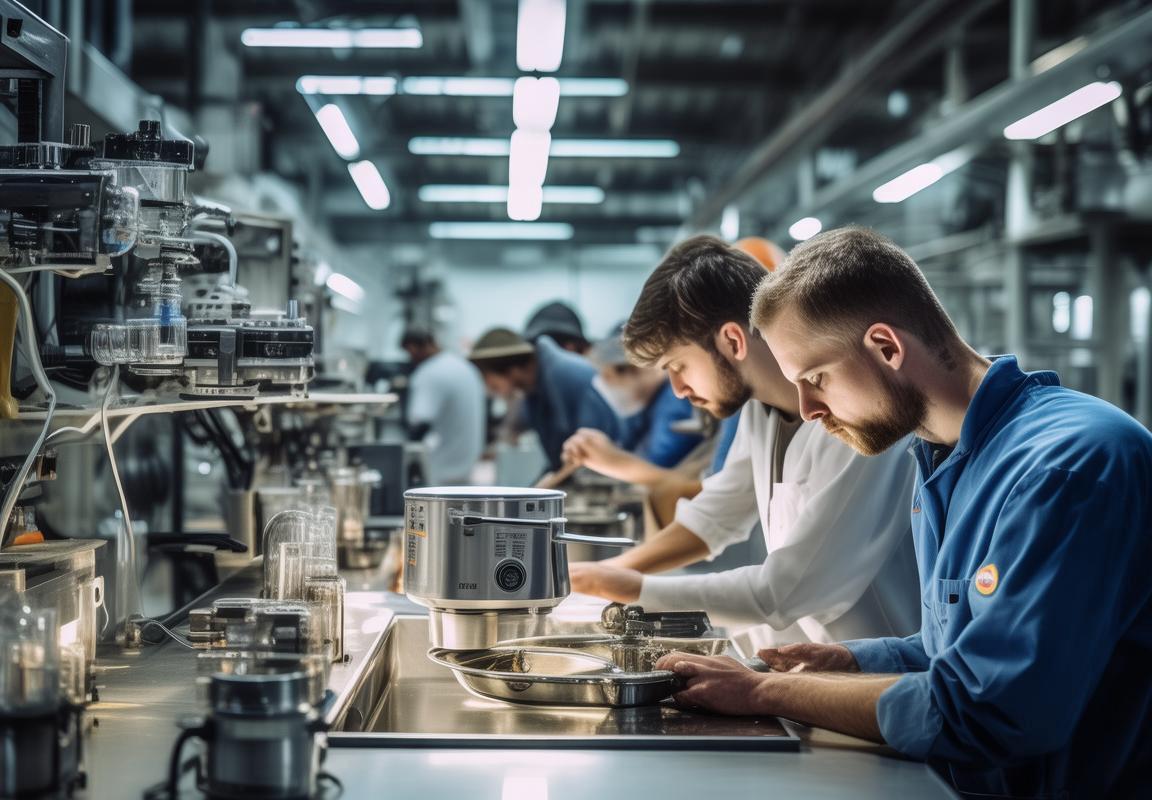
Case Studies: Successful LFGB Compliant Non-Stick Products
In the world of kitchen appliances, several products have stood out for their adherence to the LFGB (Legislative Framework on General Product Safety) standards. These case studies showcase successful non-stick products that have not only met stringent safety regulations but also delighted consumers with their performance and durability. Let’s delve into a few notable examples.
The first standout product is the “EcoGlide Non-Stick Frying Pan” by GreenPan. This pan boasts an environmentally friendly ceramic non-stick coating that is LFGB compliant. Its success lies in its ability to provide a healthy cooking alternative without the use of harmful PFOA (perfluorooctanoic acid) or PTFE (polytetrafluoroethylene) chemicals commonly found in traditional non-stick coatings. Consumers appreciate the pan’s exceptional non-stick properties, which require less oil for cooking, making it a healthier choice for their families.
Another notable entry is the “Anolon Advanced Non-Stick Cookware Set.” This set includes pots and pans with a non-stick coating that meets LFGB standards. The coating is durable and releases food effortlessly, allowing for easy cleaning. What sets this cookware apart is its innovative ceramic material, which is free from harmful substances and offers a longer lifespan compared to other non-stick coatings. The set’s sleek design and wide range of sizes cater to various culinary needs, making it a favorite among professional chefs and home cooks alike.
The “T-fal Ultimate Hard Anodized Non-Stick Cookware” is another LFGB compliant product that has captured the market’s attention. This cookware line features a unique non-stick coating that is not only durable but also scratch-resistant. The anodized aluminum construction provides excellent heat distribution, ensuring even cooking. Consumers are drawn to the product’s versatility, as it can be used on various cooking surfaces, including induction cooktops. The combination of performance, safety, and ease of use has made T-fal a go-to brand for many kitchen enthusiasts.
In the realm of bakeware, the “Joseph Joseph Nestable Non-Stick Baking Dish” is a shining example of LFGB compliant non-stick products. This innovative dish is designed to stack neatly, saving space in compact kitchens. The non-stick coating allows for easy release of baked goods, and the dish’s versatile shape accommodates a variety of recipes. Its eco-friendly nature and practical design have made it a favorite among eco-conscious consumers.
The “Calphalon Contemporary Non-Stick Cookware” is another product that has found success in the LFGB compliant market. This cookware line features a non-stick coating that is both durable and easy to clean. The cookware’s sleek design and even heat distribution make it a favorite among those who value both performance and aesthetics. Calphalon’s commitment to quality and safety has earned it a loyal customer base.
The “Cuisinart MultiClad Pro Non-Stick Cookware Set” is a comprehensive collection that includes a variety of pots and pans with LFGB compliant non-stick coatings. The set’s unique tri-ply construction combines aluminum for even heat distribution with stainless steel for durability. The non-stick coating ensures that food releases effortlessly, and the cookware’s versatility makes it suitable for a wide range of cooking methods. Cuisinart’s reputation for quality and innovation has contributed to the success of this product line.
The “All-Clad Stainless Steel Non-Stick Cookware” is a testament to the brand’s commitment to excellence. This cookware features a non-stick coating that meets LFGB standards and is paired with All-Clad’s iconic stainless steel construction. The result is a product that offers the best of both worlds: the convenience of non-stick cooking and the longevity of stainless steel. Consumers appreciate the cookware’s ability to maintain its non-stick properties over time, making it a worthwhile investment.
In the world of outdoor cooking, the “ Weber Q 1200 Gas Grill” with its porcelain-enameled, LFGB compliant non-stick cooking grates has become a staple in many kitchens. These grates provide a smooth surface for cooking, ensuring that food doesn’t stick and making clean-up a breeze. The grill’s popularity is due in part to its versatility and ease of use, which is enhanced by the non-stick grates.
These case studies illustrate the diverse range of LFGB compliant non-stick products available in the market. Each product has found its niche by combining safety, performance, and innovation, ultimately satisfying the needs and preferences of consumers. As the demand for safe and sustainable kitchen appliances continues to grow, these products are poised to become even more prominent in the years to come.
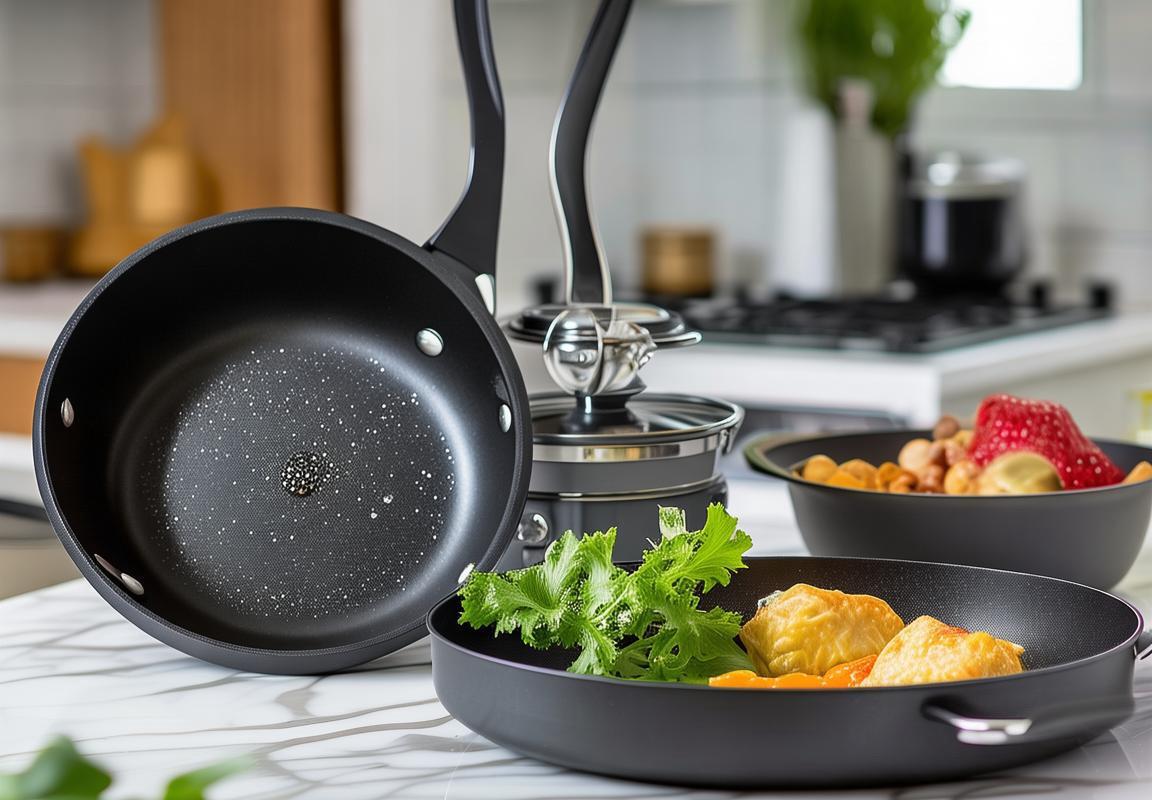
Future Outlook and Predictions for the Non-Stick Coating Market
The non-stick coating market has witnessed significant evolution over the years, with advancements in technology and changing consumer preferences shaping its trajectory. As we look ahead, several factors are poised to influence the future of this market. Here’s a glimpse into the potential outlook and predictions for the non-stick coating industry.
Consumer health consciousness is on the rise, and this shift is expected to drive demand for non-stick coatings that are not only easy to clean but also safe for everyday use. As a result, manufacturers are focusing on developing coatings that are free from harmful chemicals like PFOA and PTFE, ensuring that they meet stringent safety standards.
Innovation in material science is pushing the boundaries of what is possible with non-stick coatings. Nanotechnology has allowed for the creation of coatings that offer superior performance, durability, and release properties. These advancements are likely to continue, with potential breakthroughs in self-cleaning and antimicrobial coatings becoming more mainstream.
The environmental impact of products is a growing concern for consumers and businesses alike. As such, there is an increasing demand for eco-friendly non-stick coatings. Biodegradable and recyclable materials are being explored, and the market is likely to see more products that are both sustainable and effective.
Regulatory changes are a constant in the non-stick coating industry. For instance, the European Union’s REACH (Registration, Evaluation, Authorisation, and Restriction of Chemicals) regulation has had a significant impact on the market. Compliance with these regulations is not only a legal requirement but also a mark of quality for consumers who are becoming more aware of the health and environmental implications of the products they purchase.
Globalization has opened up new markets for non-stick coatings, with emerging economies like China and India showing strong growth potential. This expansion is creating opportunities for manufacturers to diversify their product lines and cater to regional preferences and needs.
The rise of smart kitchen appliances is also influencing the non-stick coating market. As kitchen technology becomes more integrated with digital and IoT (Internet of Things) solutions, non-stick coatings may evolve to include features like temperature control and smart coating properties that enhance the performance of these appliances.
Another trend is the customization of non-stick coatings to meet specific industry needs. For example, the automotive and aerospace industries are exploring non-stick coatings for their parts, which require high-heat resistance and durability. This niche market is expected to grow as industries seek innovative solutions to improve their products.
The market for non-stick coatings is also being affected by the rise of direct-to-consumer (DTC) brands. These brands often offer a wider range of products with more personalized options, and they are able to adapt quickly to changing consumer preferences. This competition is forcing traditional manufacturers to innovate and improve their offerings.
In terms of geographic distribution, the United States and Europe remain the largest markets for non-stick coatings due to their mature consumer markets and stringent safety regulations. However, Asia Pacific is catching up rapidly, driven by a growing middle class and increased urbanization.
As for predictions, the non-stick coating market is expected to grow at a steady pace, with a projected compound annual growth rate (CAGR) of around 5-7% over the next decade. This growth will be driven by the increasing demand for eco-friendly and health-conscious products, as well as the continuous development of new technologies.
In conclusion, the non-stick coating market is poised for a future marked by innovation, environmental responsibility, and regulatory compliance. As manufacturers continue to push the boundaries of what is possible with these coatings, consumers can expect a wider range of high-quality, safe, and sustainable options.